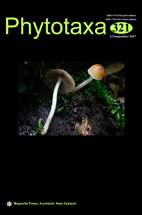Abstract
Taxonomic classification based on morphology alone can prove difficult. This is the case of the polymorphic forest tree species Santiria trimera in Africa, whose classification has remained controversial for over a century. Studies combining chloroplast and nuclear DNA sequences show the existence of several phylogenetic clades in this taxon, with some occurring in sympatry in western Central Africa suggesting the existence of at least two species. By combining genetic and morphological markers, we aim to assess the species delimitation in the Santiria species complex. Morphological trait (trunk, leaflet, flower and fruit characteristics) analysis using 223 standing individuals and 103 herbarium samples were combined with genetic analyses using 479 individuals genotyped at eight microsatellite markers. Genetic clusters were identified using Bayesian assignment in order to delimit species following the Biological Species Concept and to identify distinctive characters from morphometric analyses in retrospect. Three genetic clusters were identified and found to occur in sympatry. The type of inflorescence and the colour of unripe fruit were the most discriminant morphological traits among those genetic clusters, while many quantitative traits showed overlapping distributions between genetic clusters and explain the difficulty encountered by previous botanists to resolve the taxonomy of Santiria. The combination of genetic and morphological data suggests the presence of three species within the taxon Santiria trimera from western Central Africa. This work should guide a taxonomic revision within the genus Santiria in Africa.

